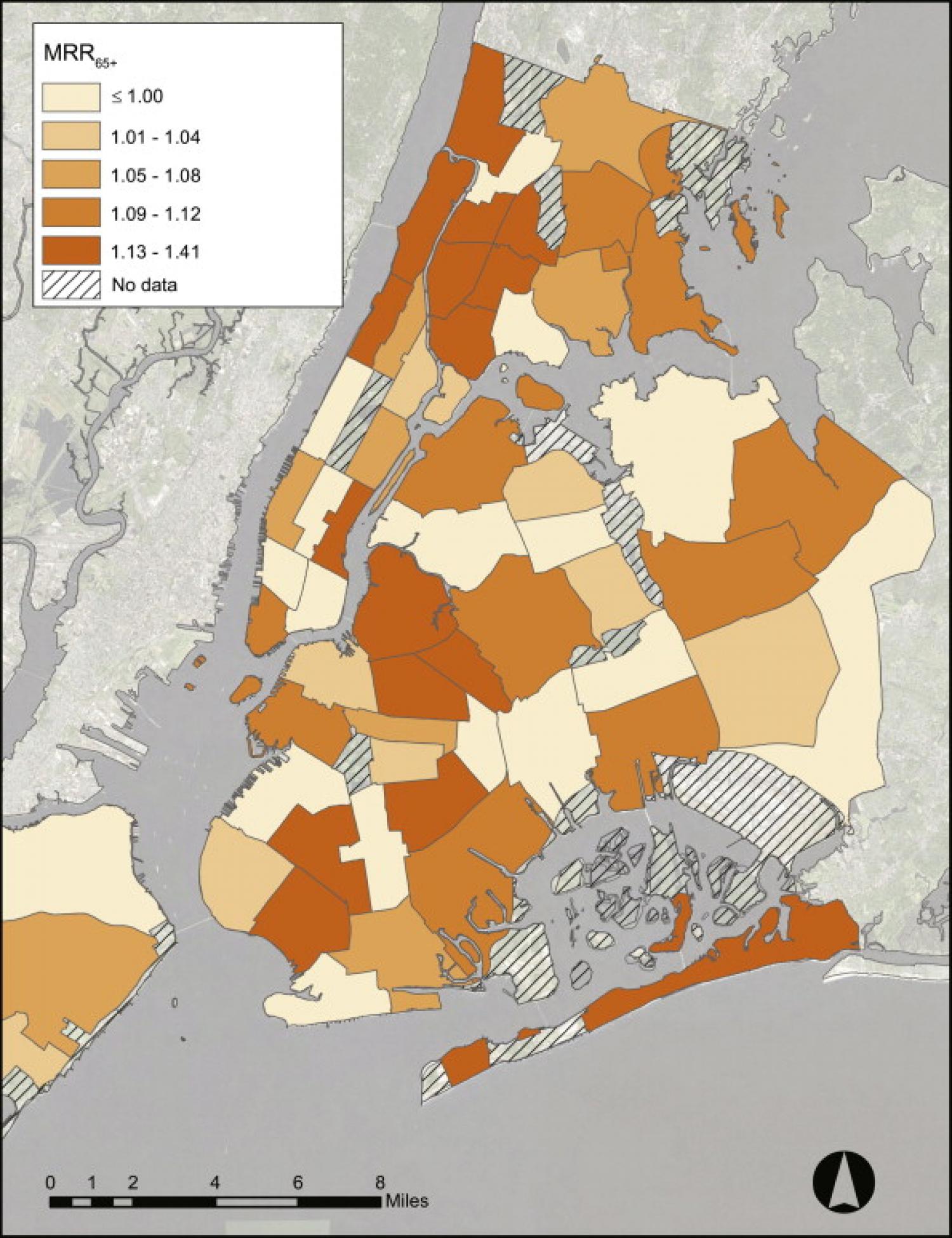
Elsevier, Health and Place, Volume 30, November 01, 2014
The health impacts of exposure to summertime heat are a significant problem in New York City (NYC) and for many cities and are expected to increase with a warming climate. Most studies on heat-related mortality have examined risk factors at the municipal or regional scale and may have missed the intra-urban variation of vulnerability that might inform prevention strategies. We evaluated whether place-based characteristics (socioeconomic/demographic and health factors, as well as the built and biophysical environment) may be associated with greater risk of heat-related mortality for seniors during heat events in NYC. As a measure of relative vulnerability to heat, we used the natural cause mortality rate ratio among those aged 65 and over (MRR65+), comparing extremely hot days (maximum heat index 100°F+) to all warm season days, across 1997-2006 for NYC's 59 Community Districts and 42 United Hospital Fund neighborhoods. Significant positive associations were found between the MRR65+ and neighborhood-level characteristics: poverty, poor housing conditions, lower rates of access to air-conditioning, impervious land cover, surface temperatures aggregated to the area-level, and seniors' hypertension. Percent Black/African American and household poverty were strong negative predictors of seniors' air conditioning access in multivariate regression analysis.
